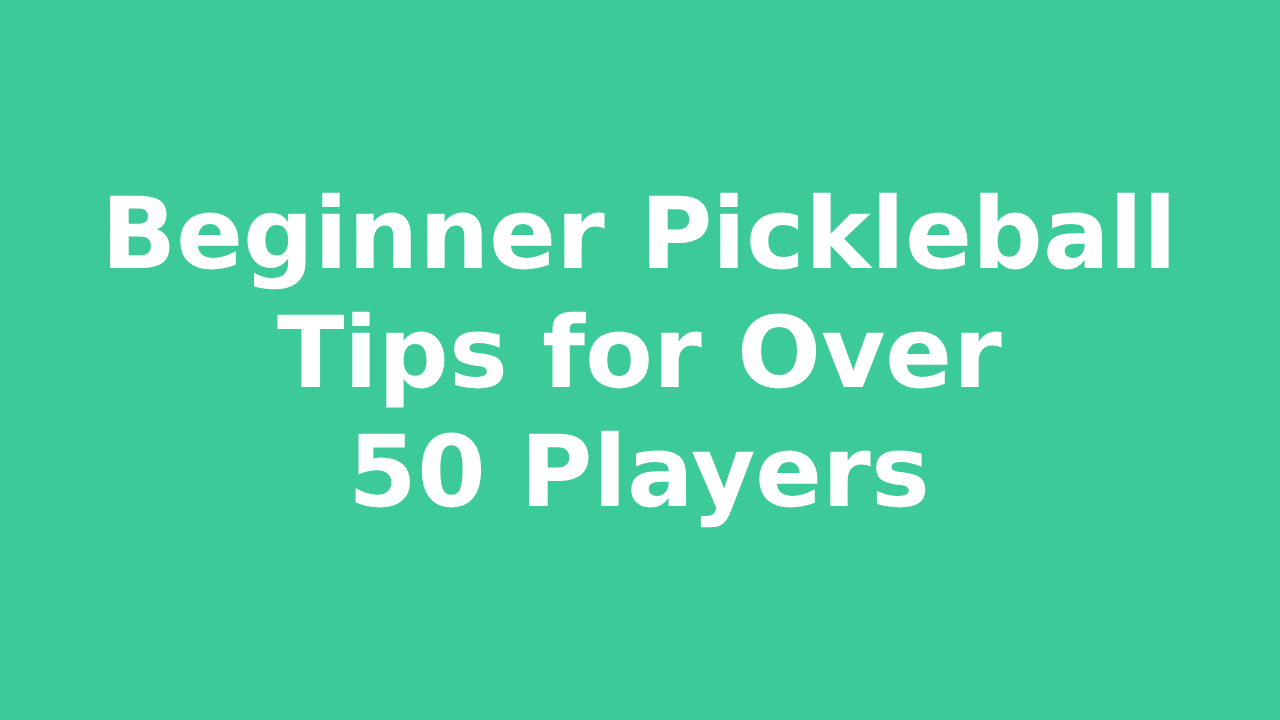Pickleball isn’t just a sport—it’s a movement. In recent years, it’s become one of the fastest-growing recreational activities in the U.S., especially among players over 50. Why? Because it’s fun, easy to learn, and far less punishing on the joints than tennis or other high-impact sports. Whether you’re picking up a paddle for the first time or you’ve played a few casual games, drills are the fastest way to improve your skills, stay active, and gain confidence on the court.
In this article, we’ll explore beginner-friendly pickleball drills specifically designed for players over 50. You’ll learn how to build fundamentals, protect your body, and have fun while sharpening your game.
Why Pickleball is Perfect for Players Over 50
Before diving into drills, let’s talk about why pickleball is such a great fit for this age group:
-
Low-impact movement: The smaller court reduces running distances, making it gentler on knees and hips.
-
Social connection: Pickleball is often played in doubles, creating built-in opportunities for friendship and camaraderie.
-
Mental sharpness: Quick decision-making and strategy help keep your mind engaged.
-
Accessibility: Lightweight paddles and underhand serves make it easier to learn than many racquet sports.
By practicing drills, you’ll improve not just your performance but also your overall enjoyment of the game.
Warming Up: The Overlooked Essential
Players over 50 often skip warm-ups, but this can lead to stiffness and injuries. A good warm-up should take 5–10 minutes and include:
-
Dynamic stretches: Arm circles, torso twists, leg swings.
-
Short jogs or side steps: Get your blood flowing.
-
Shadow swings: Pretend to hit a ball to loosen your shoulders.
Think of warm-ups as a way to “grease the joints” before the action begins. Now, let’s dive into drills.
Drill #1: The Wall Rally
Purpose: Build consistency and hand-eye coordination.
What you need: Paddle, ball, and a flat wall.
How to do it:
-
Stand about 5–7 feet from the wall.
-
Hit the ball gently against the wall so it bounces back to you.
-
Try to keep a rally going as long as possible.
Tips for Over 50 Players:
-
Focus on controlled swings instead of power.
-
Practice forehand and backhand strokes evenly.
-
Count your hits and aim to beat your personal record.
Why it works: This drill is low stress on the body but high value for muscle memory.
Drill #2: Dinking Practice
Purpose: Improve soft-touch shots near the net.
What you need: Partner or ball machine, pickleball court.
How to do it:
-
Stand at the kitchen line (the no-volley zone).
-
Rally with your partner by hitting soft dinks that land in their kitchen.
-
Focus on control, arc, and placement rather than power.
For Over 50 Players:
-
Bend your knees slightly, but don’t hunch over. Use your legs, not just your back.
-
Keep your paddle up and in front to reduce strain.
-
Practice targeting different spots (cross-court, down the line).
Why it works: Dinks slow the game down, giving you control and reducing long, tiring rallies.
Drill #3: Serve and Return Routine
Purpose: Master consistent serves and controlled returns.
How to do it:
-
Serve 10–20 balls into the correct service box.
-
Have your partner return the ball gently so you can reset.
-
Alternate roles after each set.
Variations for Over 50:
-
Practice aiming for deep serves that push your opponent back.
-
On returns, focus on depth and height rather than speed.
Why it works: Serving and returning are the only guaranteed shots you’ll have in every game. Consistency here is critical.
Drill #4: Drop Shot Challenge
Purpose: Learn how to land soft shots just over the net.
How to do it:
-
Stand near the baseline.
-
Hit the ball so it arcs gently into the opponent’s kitchen.
-
Repeat until you can consistently “drop” the ball without hitting it too high.
Tips for Over 50 Players:
-
Use a short backswing and soft grip.
-
Think “lift” rather than “hit.”
-
Aim for margin—not perfect placement.
Why it works: Drop shots help you transition to the net without giving your opponent an easy smash.
Drill #5: Footwork Shuffle
Purpose: Improve lateral movement without straining joints.
How to do it:
-
Stand at the baseline.
-
Shuffle side to side between two cones (or imaginary markers).
-
Add in shadow swings as if hitting balls.
Over 50 Adaptation:
-
Keep steps short and controlled to avoid tripping.
-
Stay light on your feet but avoid bouncing too high.
Why it works: Good footwork reduces unnecessary reaching and awkward lunges that can strain muscles.
Drill #6: Volley Rally
Purpose: Build quick reflexes at the net.
How to do it:
-
Stand across from your partner at the kitchen line.
-
Volley back and forth without letting the ball bounce.
-
Gradually increase speed while maintaining control.
Tips for Older Players:
-
Keep your paddle high (eye level or chest level).
-
Use short, compact swings.
-
Don’t lock your knees—bend slightly for balance.
Why it works: Volley practice sharpens reflexes and trains you to control the pace of the game.
Drill #7: Target Practice
Purpose: Improve accuracy and placement.
How to do it:
-
Place targets (cones, towels, or hoops) on the court.
-
Practice hitting balls so they land near or on the targets.
-
Rotate between forehand, backhand, serve, and dink targets.
Over 50 Focus:
-
Prioritize control over speed.
-
Challenge yourself but don’t overdo repetitions in one session.
Why it works: Accuracy often beats power in pickleball, especially in doubles play.
Conditioning Drills That Won’t Wear You Out
Skill drills are important, but your body also needs endurance and strength. Here are gentle conditioning drills suitable for players over 50:
-
Ball pickup squats: Instead of bending at the waist, squat to pick up balls—great for leg strength.
-
Step-in swings: Practice stepping forward while swinging to mimic game movement.
-
Mini-court rallies: Play games using only half the court to reduce running while boosting reaction time.
Safety Tips for Players Over 50
-
Hydrate often: Dehydration happens faster as we age.
-
Wear supportive shoes: Court shoes provide stability and reduce the risk of falls.
-
Use joint-friendly paddles: Lightweight paddles with cushioned grips can reduce wrist and elbow strain.
-
Don’t overtrain: Rest days are as important as drill days.
How to Structure a Practice Session
Here’s a sample one-hour drill session:
-
Warm-up – 10 minutes
-
Wall Rally / Dinking – 10 minutes
-
Serve and Return Practice – 10 minutes
-
Drop Shots + Volleys – 15 minutes
-
Target Practice or Footwork Shuffle – 10 minutes
-
Cool down & stretches – 5 minutes
This structure gives you a full workout without overtaxing your body.
Building Confidence Through Drills
The goal of these drills isn’t perfection—it’s confidence. As you practice:
-
Your reactions become faster.
-
Your body learns efficient movement patterns.
-
You reduce the risk of injury.
Pickleball is a lifelong sport. With smart practice, you’ll not only play better—you’ll enjoy the game more, connect with others, and stay active well into the future.
Final Thoughts
For players over 50, pickleball isn’t just about competition—it’s about health, fun, and community. By incorporating these beginner drills into your routine, you’ll quickly notice improvements in your consistency, footwork, and confidence. More importantly, you’ll feel the joy of mastering a new skill at any age.
So grab your paddle, warm up, and start drilling. The court is waiting for you.





